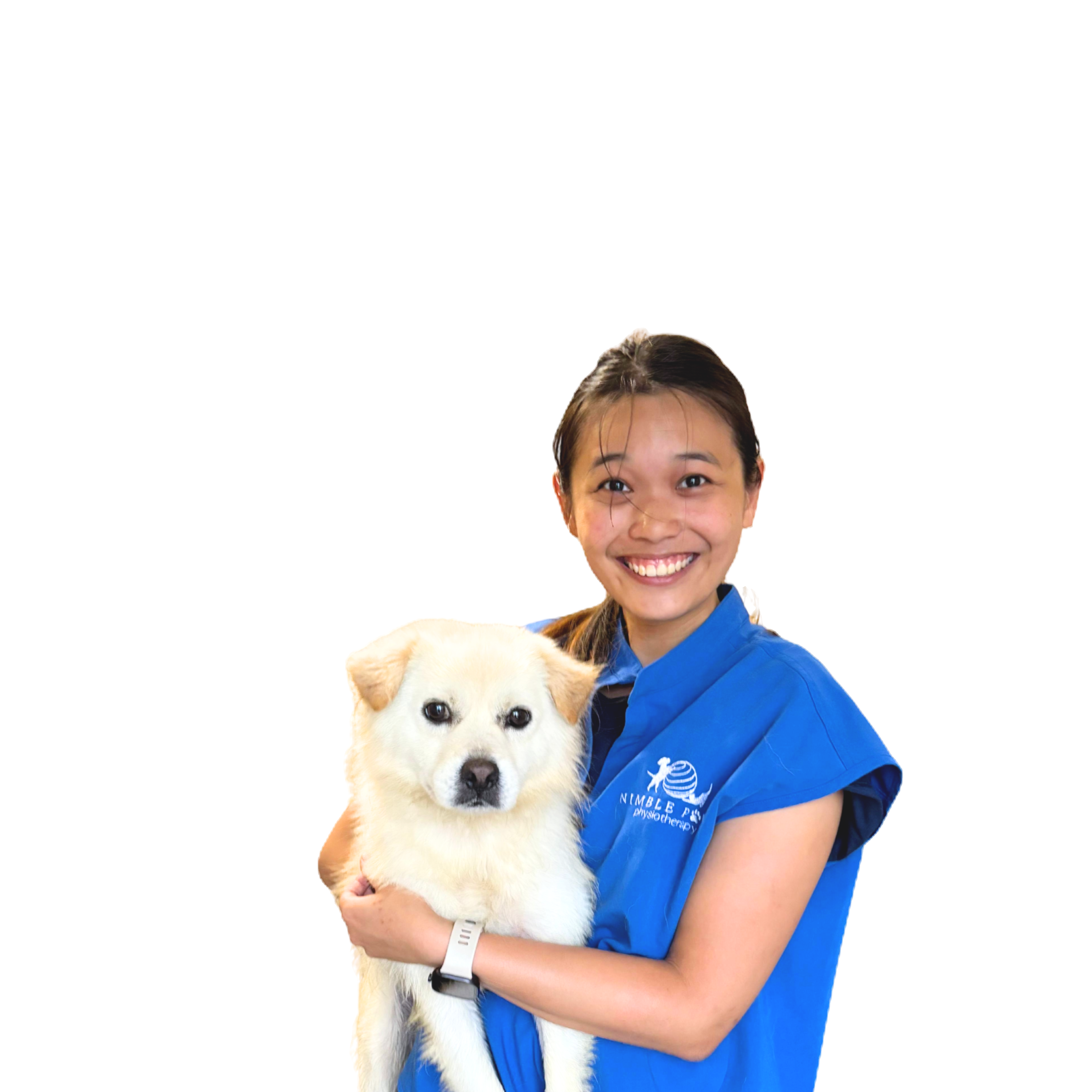How a Human Physiotherapy Background Elevates Animal Rehabilitation
- Samantha

- 47 minutes ago
- 3 min read
Physiotherapy is a healthcare profession focused on the prevention, treatment, and management of physical conditions. Physiotherapists use a combination of targeted exercise, education, manual therapy, and modalities to help patients restore movement and function. We work with people of all ages with a wide range of health needs, from musculoskeletal injuries to neurological and cardiopulmonary conditions.

Physiotherapy is far more than “just exercise.” It’s a structured, evidence-based approach that rebuilds functional mobility through targeted, progressive interventions. Physiotherapists are experts in movement, trained to analyse subtle compensations, correct imbalances, and optimise how the body moves.
While physiotherapy is often associated with humans, its principles are increasingly applied to animals, particularly dogs and cats. A background in human physiotherapy offers a deeper level of understanding and skill that greatly enhances the quality of canine and feline rehabilitation.
Human-standard care for Dogs and Cats
Human-trained animal physiotherapists bring comprehensive clinical insight to every case. Rehabilitation is not just exercise — each intervention is targeted, specific, and progressive, tailored to the pet’s individual condition.

With this foundation, human-trained animal physiotherapists recognise how pain, weakness, past injuries, along with underlying health issues may affect daily tasks. Early intervention helps to prevent secondary complications and promotes smoother recovery.
The Physiotherapy Approach: From Assessment to Treatment
Physiotherapy always begins with a structured and thorough assessment which forms the foundation for an effective treatment. Because dogs and cats cannot verbalise their symptoms, replicating a structured, human-standard approach is essential.

At Nimble Paws, every first visit begins with our NIMBLE™ Clinical Assessment — a full-body evaluation designed to understand your pet’s mobility, comfort, and function.
From there, we:
Identify and prioritise key impairments and functional limitations
Develop an individualised treatment plan aligned with the pet’s goals and condition
Continuously evaluate and adjust interventions according to your pet’s progress
This ensures no detail is overlooked and that every step of rehabilitation is grounded in clear clinical reasoning.
Purposeful Application of Clinical Skills
Physiotherapists are trained in a wide range of evidence-based techniques and every clinical decision is guided by clinical reasoning. Each treatment plan is tailored to suit each patient’s condition, stage of recovery and individual response. This ensures that every session has a clear purpose and direction.

Every dog and cat respond differently to touch and movement. Human-trained physiotherapists are skilled in reading these non-verbal cues, adapting their techniques according to each pet’s:
Temperament
Pain response
Quality of movement
And ensuring that each session remains safe, comfortable and effective.
Evidence-Based Practice
Decades of clinical research in human rehabilitation have shown us what works and why.With a strong scientific foundation, human physiotherapists entering animal care apply proven principles of movement, exercise science, and tissue healing to animal care.
This ensures rehabilitation is not based on trial and error, but guided by evidence such that your pet’s treatment is:
✅ Safe
✅ Effective
✅ Grounded in science
Education and Empowerment
Physiotherapy doesn’t end in the clinic — owners are key partners in recovery.
We empower you by helping you understand:
Your pet’s condition and recovery timeline
The role and purpose of prescribed exercises
How to adjust daily activity safely
Importance of consistency
Through guided participation and clear instruction, owners become active partners in their pet’s rehabilitation, leading to better long-term outcomes and confidence in caring for their beloved companions.
Movement as Medicine

Movement forms the foundation of good health. It strengthens the body, prevents injury, and improves quality of life. Physiotherapists understand this deeply. Whether working with humans or animals, we recognise that intentional and purposeful movement is essential to Empower Movement.
By applying the principles of physiotherapy to animal care, we help dogs and cats:
Recover more effectively after injury or surgery
Maintain mobility as they age
Enjoy a better and more active life
A human physiotherapy background provides the clinical reasoning, evidence awareness, and problem-solving mindset that make animal rehabilitation both effective and meaningful!


Comments